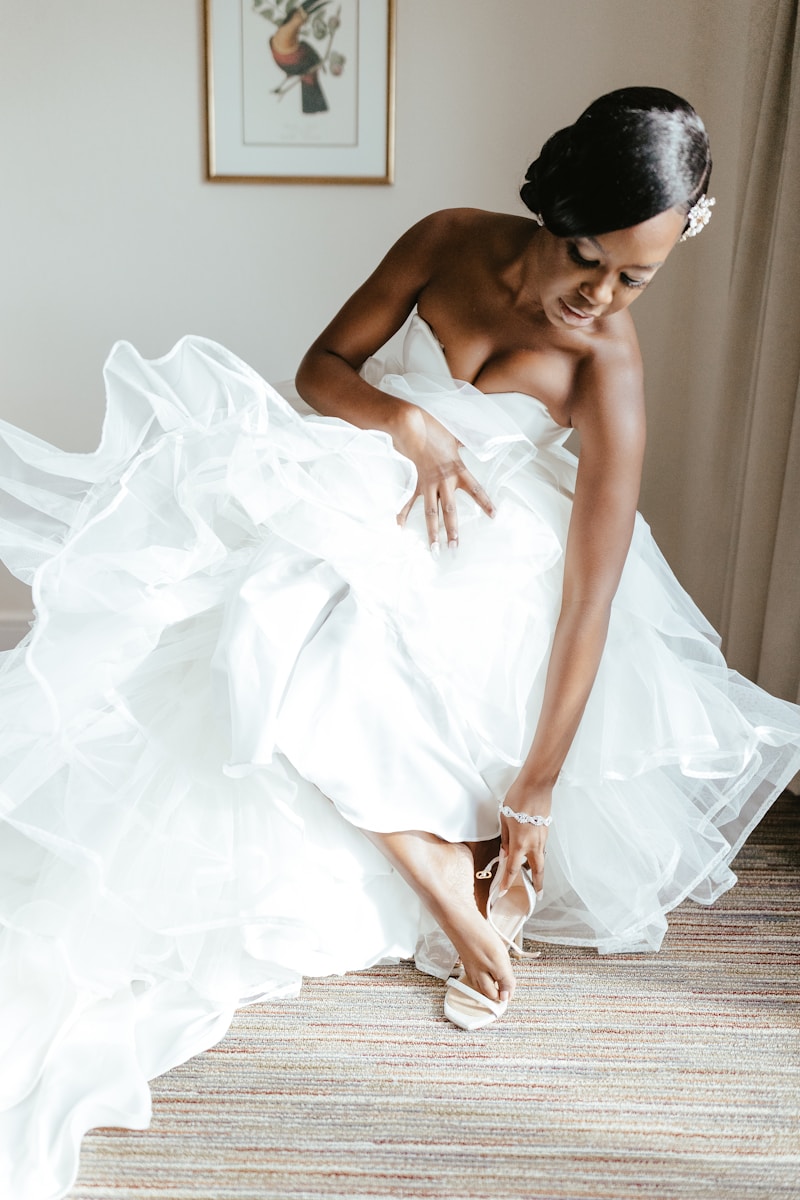The Role of Material Selection in Wedding Dress Pricing
The Role of Material Selection in Wedding Dress Pricing
Understanding the Impact of Material Selection on Wedding Dress Pricing
Every bride dreams of a perfect wedding dress, a gown that reflects her style, personality, and of course, her budget. But have you ever wondered how material selection plays a crucial role in the pricing of wedding dresses? This article will delve into the various materials used in wedding dresses, their impact on costs, and how they can influence your choices as a bride-to-be.
The Importance of Material in Wedding Dress Design
When it comes to wedding dress design, material selection is fundamental. The right fabric not only affects the aesthetic appeal but also the overall comfort and fit of the gown. Here, we’ll explore some popular materials used in bridal wear:
| Material | Characteristics | Price Range |
| Satin | Soft, shiny, and luxurious feel | $$$ |
| Lace | Delicate and intricate patterns | $$$ |
| Chiffon | Lightweight and flowy, ideal for summer | $$ |
| Organza | Stiff and transparent, adds volume | $$ |
| Tulle | Soft and netted, primarily for layering | $$ |
The table above summarizes the various materials commonly used in wedding dresses. Each material has its own set of characteristics that contribute to the dress's overall look and price. For instance, satin, renowned for its luxurious feel, typically hails from high-end fabric suppliers, thus inflating the cost of dresses made from it.
Factors Influencing the Cost of Wedding Dress Material
Several elements impact how material selection affects wedding dress pricing. Let’s examine them closely:
1. Quality of the Fabric
High-quality fabrics often cost more, impacting the overall price of the gown. Fabrics like silk and high-end lace are not only expensive but require special care and craftsmanship, resulting in higher costs for brides.
2. Fabric Weight and Density
The weight and density of a material can directly influence production costs. Heavier fabrics usually require more material, which means higher prices. For brides seeking a gown that feels substantial and luxurious, this consideration is vital.
3. Brand and Designer Influence
High-end designers tend to use more exclusive fabrics and materials that can substantially augment the cost of a wedding dress. Even if the design is simple, the brand's reputation can lead to higher pricing. Brands such as Vera Wang and Monique Lhuillier, for example, are known for their couture dresses crafted with top-quality fabrics.
4. Seasonal Trends
Fashion trends fluctuate seasonally. Certain materials may become fashionable during specific times of the year, affecting their availability and pricing. For example, chiffon is often favored in spring/summer weddings, leading to a surge in demand and potential price increases.

Popular Fabric Choices Among Brides
Brides-to-be often explore many fabric options when hunting for their perfect dress. Each fabric offers unique qualities, so understanding their characteristics can help in making an informed choice.
Satin
Satin is a favorite thanks to its luxurious sheen and elegant drape. This fabric typically ranges from mid to high price points, depending on the quality and brand. Its soft surface enhances a formal ambiance, making it a preferred choice for evening weddings.
Lace
Lace evokes a romantic and timeless mood, often used for detailing or as an overlay. The price of lace can vary significantly based on its intricacies and sourcing, with handmade lace costing more than machine-made options.
Chiffon
Chiffon is lightweight and flowy, perfect for creating a relaxed yet sophisticated look, especially in beach or garden weddings. It is generally more affordable, making it an excellent choice for budget-conscious brides.
Customization and Alterations
Customizing a wedding dress often entails additional costs, particularly if the bride chooses high-quality fabrics. Customization can include different materials than what a designer originally uses, which can further influence the cost. Additionally, alterations may be necessary to achieve the perfect fit, introducing more pricing variables.
Understanding Your Budget
When considering material selection, it's essential to set a budget. Understanding how various fabrics influence pricing allows brides to make informed decisions. It’s advisable to list your priorities and seek dresses that fulfill your desired aesthetics while adhering to your budget constraints.
Budget-Friendly Tips
If you’re working with a limited budget but desire a quality look, here are some suggestions:
- Consider renting a dress instead of purchasing.
- Look for sample sales or trunk shows where designers offer discounts.
- Opt for dresses made from chiffon or tulle instead of satin or lace.
- Be open to off-the-rack dresses, which often cost less than custom designs.
Summing Up: The Relationship Between Material and Cost
To conclude, material selection plays an instrumental role in wedding dress pricing. From satin to lace, the fabric you choose will not only influence the overall feel and style of your gown but also its cost. As you embark on your wedding dress journey, consider the materials that best align with your vision, comfort, and budget.
Ultimately, choosing the right fabric enriches your wedding experience by ensuring that your dress reflects your unique personality while remaining budget-friendly. Always remember to weigh the pros and cons of each fabric option, and don't hesitate to consult with your designer for expert guidance.
Happy dress hunting!
